Guest Post by: The Competitive Enterprise Institute, The Heartland Institute, the Energy & Environmental Legal Institute, the Committee for a Constructive Tomorrow, and the International Climate Science Coalition, and Truth in Energy and Climate.
Editor’s note: This summary serves as a fact check on the biggest false claims made in the media in July, 2023.
The media is calling July 2023 the “hottest month on record” and even the “hottest month in the history of civilization.” Keeping in mind that July is typically the warmest month of every year, NASA satellite data indicate that July 2023 was the warmest July in the satellite record. But that record only dates back to 1979 and there certainly were Julys before 1979.
In terms of monthly temperature anomalies (temperature differences relative to a common baseline used to evaluate the notion of emissions-driven “global warming”), February 2016 had a greater anomaly than July 2023. March 2016 had the same anomaly and April 1998 was only an unmeasurable 0.02°C lower (see graph, below, and data). So February-March 2016 and April 1998 are not really endorsements of the hypothesis that every emission warms the planet.
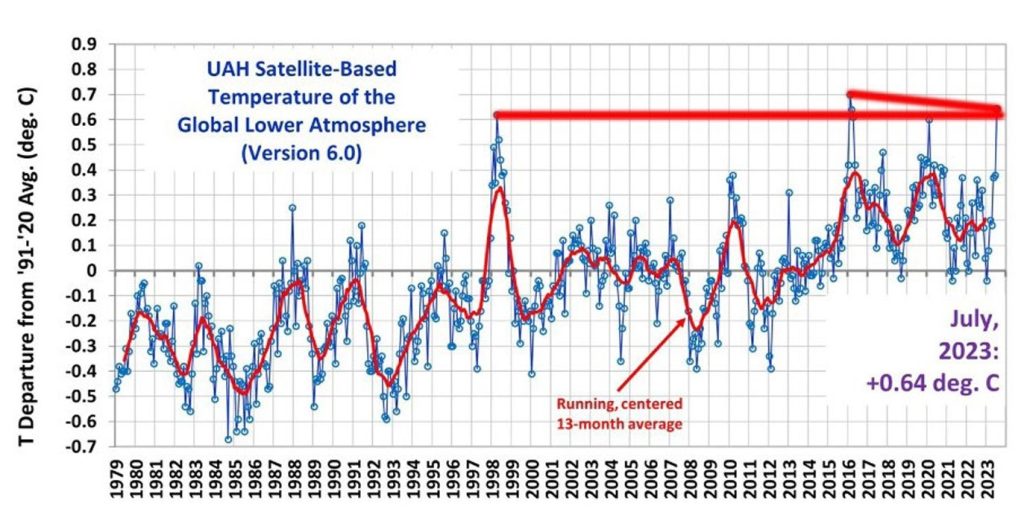
Recalling that average global temperature is on the order of 58°F, use of the term “hottest” is obviously quite an exaggeration. Finally, the notion of “average global temperature” is not really meaningful in the first place. It has no physical reality, and its component satellite and surface station temperature measurements lack precision to a significant degree.
Notwithstanding the above, was July 2023 the “hottest month in the history of civilization”? We will address that after you check out the 10 climate fact checks for July 2023 presented below.
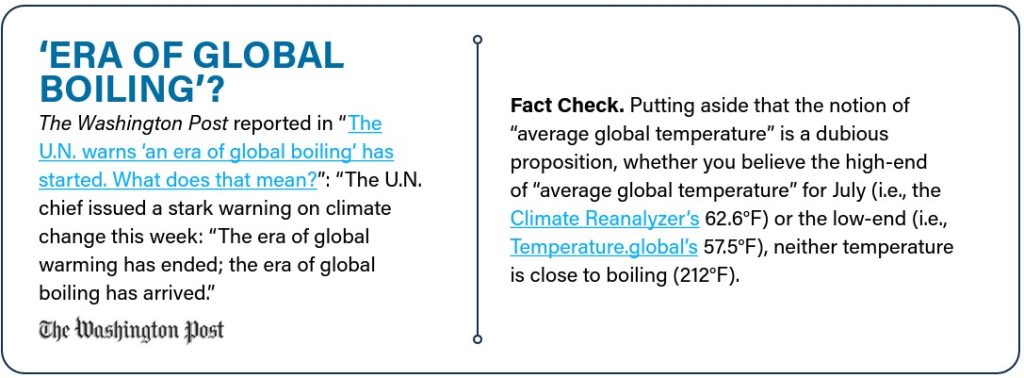
Links: The Washington Post article, Climate Reanalyzer, Temperature.global data.
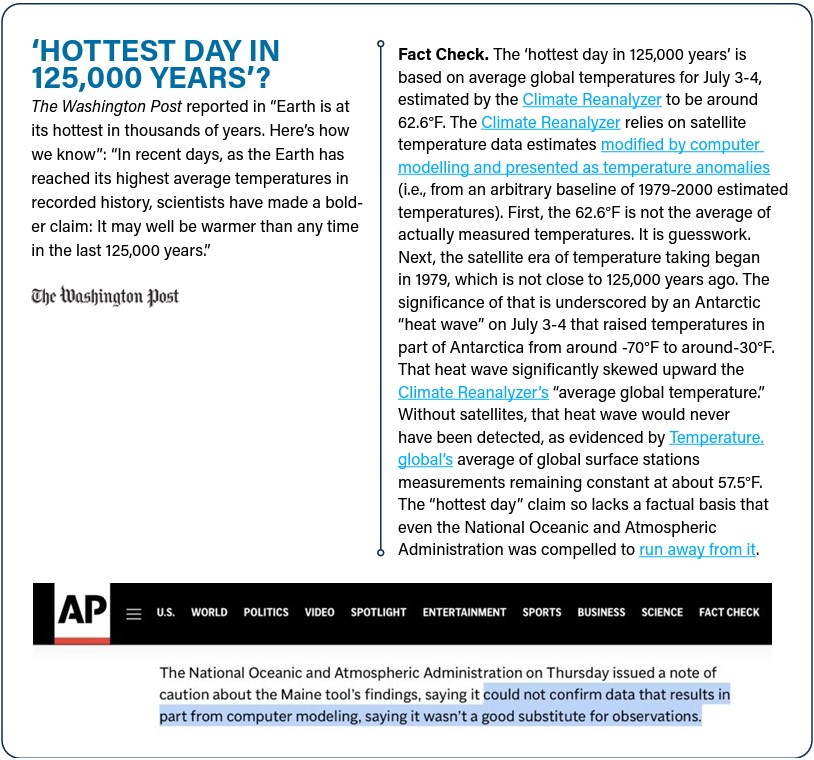
Links: Climate Reanalyzer, Climate Realism post, Temperature.global data, Associated Press article.
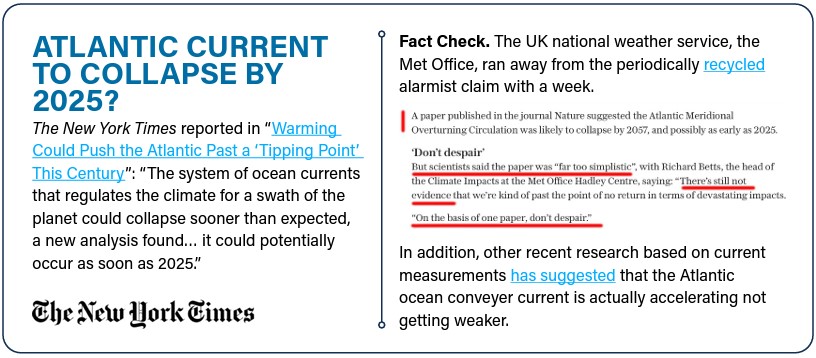
Links: The New York Times article, Met Office, Climate Realism post.
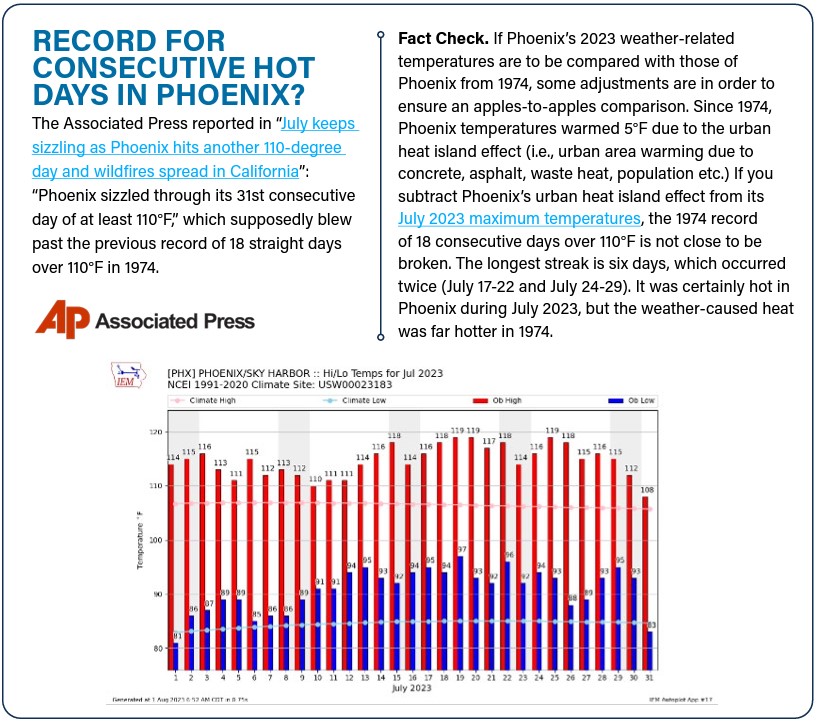
Links: Associated Press article, Arizona State Climate Twitter post.

Links: The Washington Post article, Real Climate Science post.
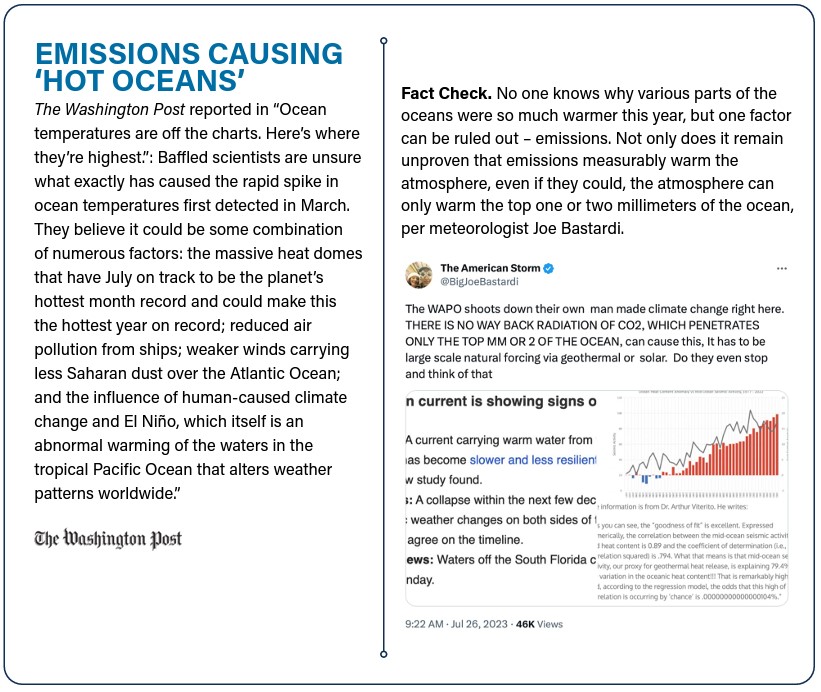
Links: The Washington Post article.
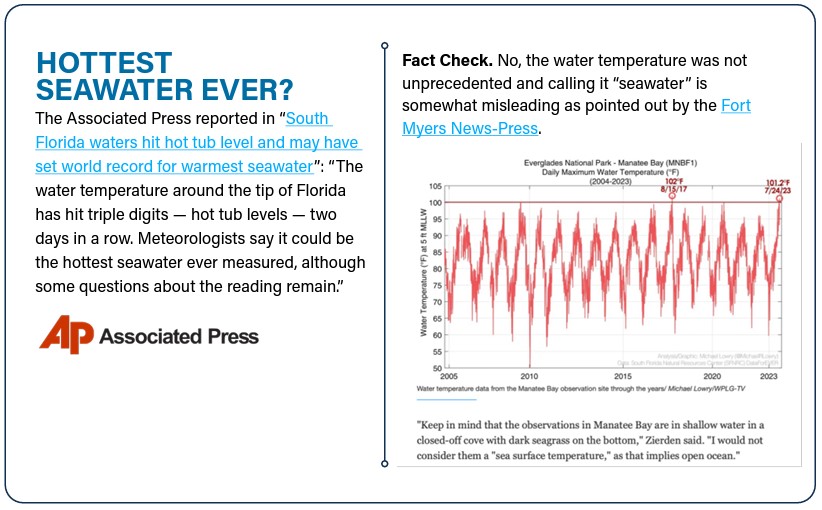
Links: Associated Press article, Fort Myers News-Press article.
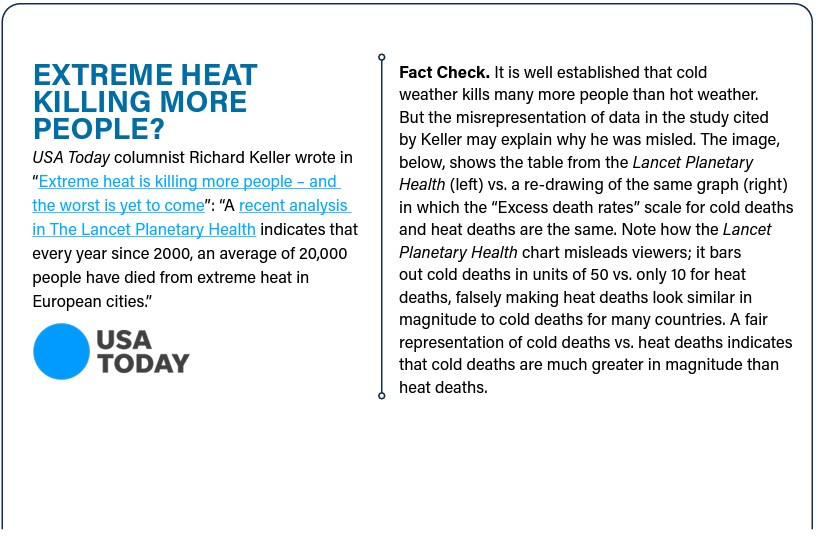
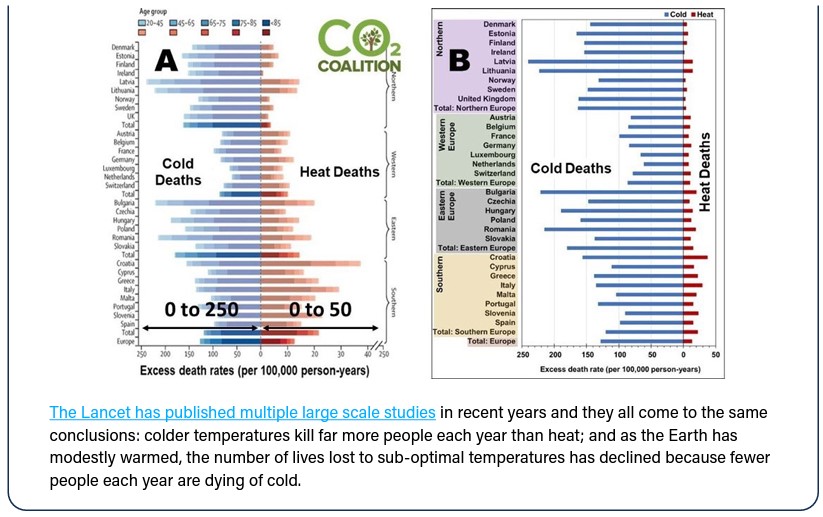
Links: USA Today article, The Lancet Planetary Health, Climate Realism post.
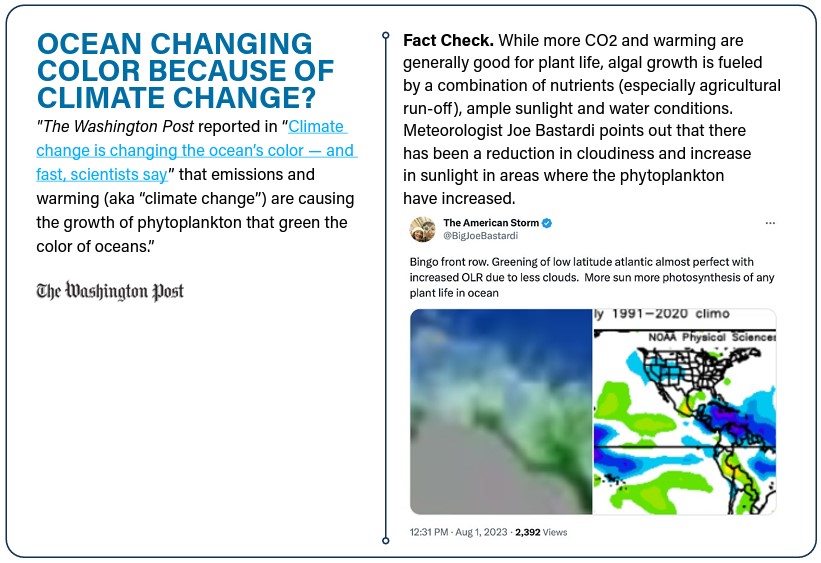
Links: The Washington Post article.
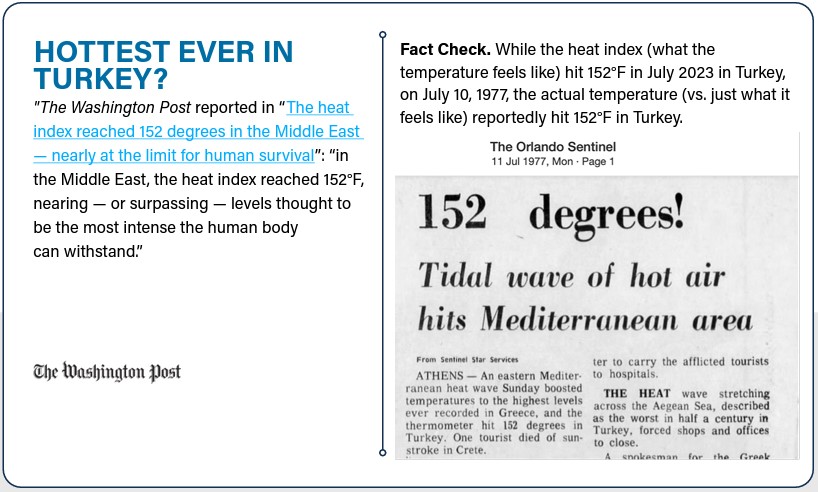
Links: The Washington Post article.
So was July 2023 the “hottest month in the history of civilization”? Consider the following.
July’s warm temperature was skewed by the strong, short-term spike in Antarctic temperatures highlighted below. Such a short-term pike in temperatures is not indicative of a long-term climate trend, but rather anomalous, localized factors.
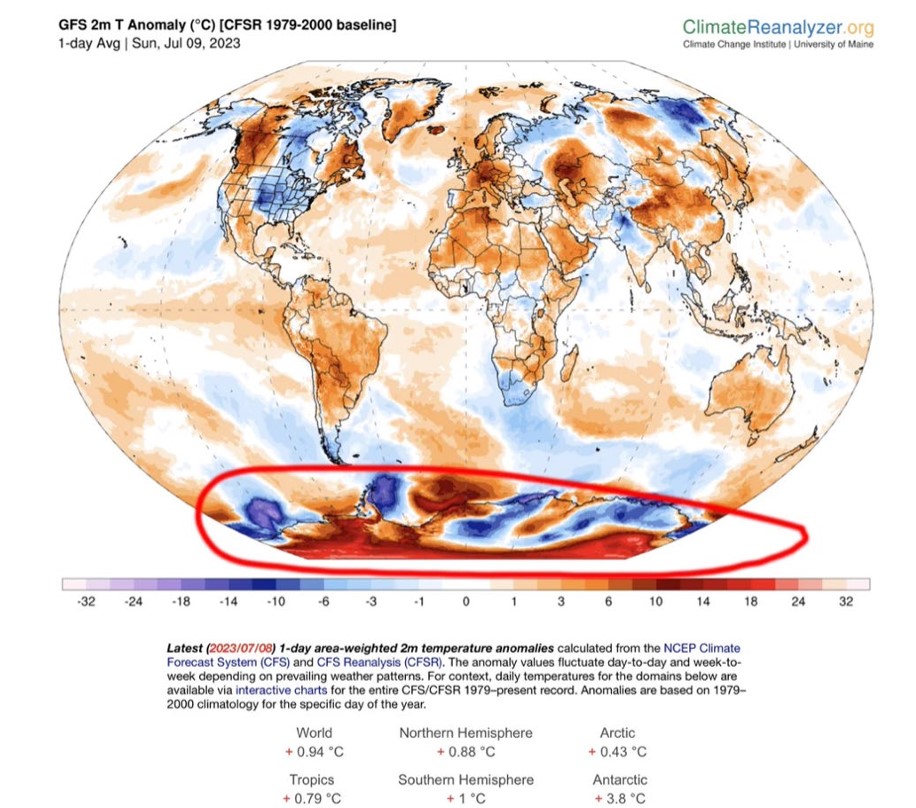
That heat wave was only detected and factored into average global temperature because of satellite coverage of the globe. But satellite coverage didn’t begin until 1979. So similar heat waves that may have occurred before 1979 would be unknown and not factored into average global temperature calculations. So it is not possible to claim that July 2023 was the “hottest month in the history of civilization” because such data does not exist.
Finally, it is important to recall that the basis of climate alarm is that emissions of greenhouse gases drive global warming. We believe recent warming has been driven by the series of El Nino events since 1980, not emissions. July’s warm temperatures do not alter this view as, in fact, a new El Nino seems to have started.
Until next month…
Reposted from JunkScience.com, to read the original PDF, click here.













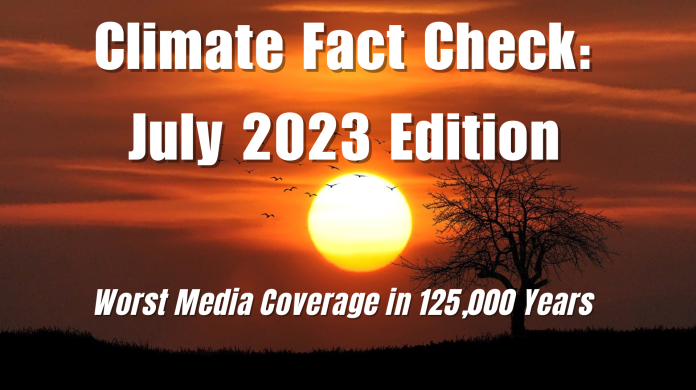









No reason to “panic”. Only a true dilettante, basing his knowledge on ideology, can draw the conclusion about “global warming” from that satellite image, where the El Nino peak temperatures are connected by a red line. Using the same principle, one could draw the conclusion that the temperature drop after the Pinatubo volcano would have heralded a new ice age. Have you thought about what else that July temperature spike, as well as the slightly elevated other monthly temperatures over the past year or so, could be due to? I would recommend considering the impact of the water vapor that erupted in Tonga on January 15, 2022 into the stratosphere from the Hunga Tonga–Hunga Haʻapai volcano on the global temperature. The water vapor content of the stratosphere increased by 13% as a result of the volcanic eruption. Increased water vapor prevents the Earth’s heat from “escaping” into space, i.e. raising the global temperature. Short-term forecasts of global temperature trends have failed, for example, in Simo Ruoho’s G-Index for 6 months after June 2022, because the calculation formulas could not predict the increase in water vapor in the stratosphere caused by the eruption of Hunga Tonga–Hunga Haʻapai. Nowadays, even that deficiency has been corrected. The chart can be found at https://www.youtube.com/watch?v=x1jx_SoH2Iw at 1:03. More detailed presentation of G-Index: https://www.youtube.com/watch?v=X-T8PukzuOg&list=PLHLdzAUUB0gu5arTyjCeV46h-uT5HALuX&index=12
I was under the impression that May and June were unusually cold. Las Vegas did not reach 100 f until July 1, 6 weeks late. San Francisco also 6 weeks late to finally go over 80 F July 1. Global temperature in July did not show any spikes up or down and was about 57.45 F. It is up in August to 57.65 F. Is this correct?